Indoor Insect Light Traps: Effective Pest Management
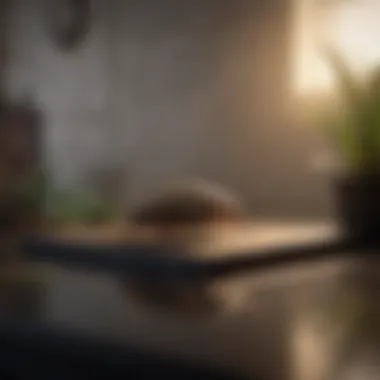

Intro
Indoor insect light traps are an essential tool for managing pests effectively and sustainably. As people spend more time indoors, understanding how these traps work can lead to better pest control solutions. Light traps not only capture insects but also help reduce reliance on chemical pesticides, promoting a healthier indoor environment. This guide will examine the principles behind these devices, the various types available, and their suitability for different home settings. The goal is to empower homeowners with knowledge about maintaining a pest-free space while considering eco-friendly options.
Understanding Pests
Definition of Pests
Pests are organisms that cause annoyance, disease, or damage to humans, property, or crops. They include insects, rodents, and even certain plants that can affect the desirability of living spaces or garden areas. Recognizing what constitutes a pest is the first step in effective management. Common indoor pests include household insects such as roaches, flies, and mosquitoes. Each has its own habits and implications for health and hygiene.
Importance of Pest Identification
Identifying pests accurately is crucial for determining appropriate control methods. Misidentification can lead to ineffective solutions. It’s important to observe and recognize the signs of infestation, such as droppings, nests, or physical sightings of the pests themselves. Knowing the specific pest can guide you in selecting the right indoor insect light trap and other control measures.
Prevention Techniques
Home and Garden Preventative Measures
Preventive actions can significantly reduce the likelihood of pest infestations. Keeping living areas clean and free of food debris is essential. Regularly vacuuming and sealing food can deter pests. Additionally, maintaining gardens with proper sanitation measures will also help. Some useful techniques include:
- Sealing entry points: Ensure that doors and windows are properly fitted to close off access.
- Trimming vegetation: Keep plants trimmed and away from home walls to reduce hiding places.
- Proper waste disposal: Use airtight bins to minimize attraction from scraps.
Seasonal Prevention Tips
Pests often thrive in certain seasons. Therefore, adapting prevention techniques throughout the year can enhance effectiveness. During warmer months, ensure that screens are fitted on windows. In winter, inspect for cracks and crevices that could allow insects to enter. Regular home inspections help maintain a barrier against potential infestations.
Eco-Friendly Pest Control Solutions
Overview of Sustainable Practices
Adopting eco-friendly practices in pest control supports sustainability and health. Using indoor insect light traps is one aspect of this approach. These traps can help minimize the use of chemical alternatives, which may pose dangers to human health and the environment. Understanding your local ecosystem can also aid in choosing the right kind of controls without disrupting beneficial species.
Natural Remedies and Their Effectiveness
In addition to traps, various natural remedies exist to deter pests. Some effective methods include:
- Essential oils: Oils like peppermint and tea tree can repel certain insects.
- Diatomaceous earth: This powder can be sprinkled in areas where pests are seen; it dehydrates and kills them.
- Soap solutions: A mixture of soap and water can be used for soft-bodied insects, such as aphids.
By combining these methods with indoor insect light traps, one can achieve a balanced pest management strategy.
Understanding Indoor Insect Light Traps
Indoor insect light traps represent a significant innovation in pest control strategies. As concerns regarding the environmental impact of chemical pest control methods grow, these traps provide an effective and eco-friendly alternative. Understanding these devices is crucial for homeowners seeking to maintain a pest-free environment without resorting to harmful chemicals.
Definition and Purpose
Indoor insect light traps are devices designed specifically to attract and capture flying insects using light sources, often ultraviolet (UV) light. The primary purpose of these traps is to reduce insect populations in domestic settings, such as homes, offices, and restaurants. Their effectiveness lies in their ability to lure insects into specific areas, ultimately facilitating easier pest management.
The need for such traps arises from the limitations of traditional pest control methods, such as sprays and fumigation. By employing light traps, homeowners can not only prevent insect infestations but also minimize the risks associated with chemical exposure. The integration of these traps into regular pest management routines is a step towards more sustainable practices.
Mechanism of Action
UV Light Attraction
UV light attraction is a pivotal feature of indoor insect light traps. Many flying insects, including moths, fruit flies, and mosquitoes, are naturally attracted to UV wavelengths. This characteristic stems from their biology, where they use light to navigate or find food sources. Indoor insect light traps exploit this behavior to draw insects in.
The key characteristic of UV light attraction is its effectiveness across various species of insects, leading to a broader reduction in pest populations. This makes it a beneficial choice for homeowners seeking a reliable solution for insect control.
Moreover, UV light sources are typically energy-efficient and can have a long service life, thus emphasizing their utility for ongoing pest management campaigns. However, it is important to position these traps correctly, as their efficacy might decrease in areas with competing light sources.
Capture Mechanisms
Capture mechanisms are integral to the functioning of indoor insect light traps. Generally, these traps combine UV light with a specific method for capturing insects. Two common capture mechanisms are electrocution and adhesive surfaces.
Electrocution traps utilize a grid of electrified wires to zap insects upon contact. The key advantage of this mechanism is its immediate effectivity, swiftly eliminating pests. On the other hand, adhesive traps employ sticky surfaces to ensnare insects. While both methods effectively reduce insect numbers, they cater to different preferences and pest management strategies.
Additionally, a notable disadvantage of electrocution traps is that they may pose safety risks, particularly in homes with children or pets. In contrast, adhesive traps are often deemed safer but may require more frequent maintenance to remove dead insects. Understanding these capture mechanisms is crucial when selecting the right indoor insect light trap for a particular environment.
"Indoor insect light traps are crucial for eco-friendly pest management, balancing efficacy with safety."
In sum, understanding indoor insect light traps requires a focus on their definitions, purposes, and operational mechanisms. With increasing awareness of pests and their control in living spaces, utilizing such traps not only makes practical sense but also aligns with sustainable practices for pest management.
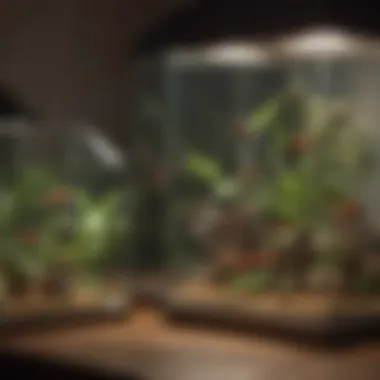
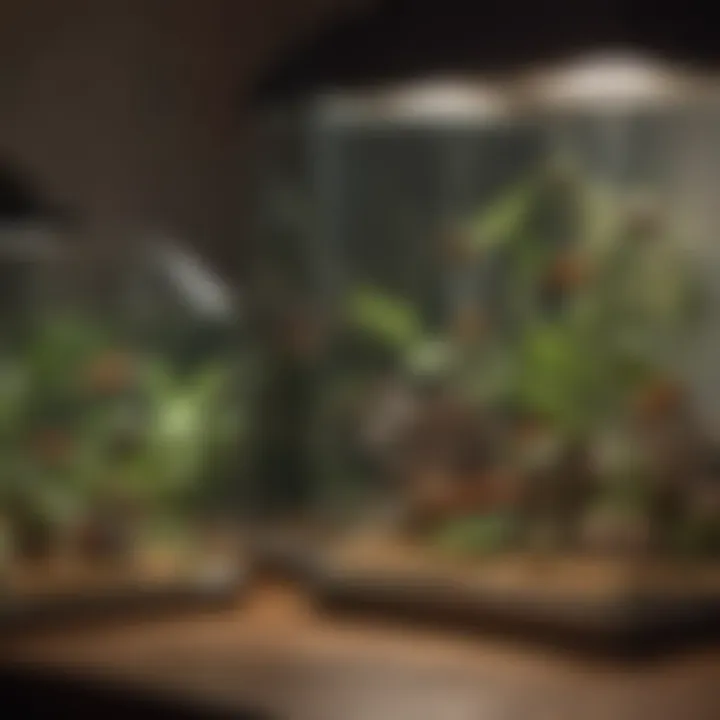
Types of Indoor Insect Light Traps
Understanding the different types of indoor insect light traps is crucial for effective pest management. Each type offers unique benefits and drawbacks, making them suitable for various environments and insect species. By identifying the right model for specific needs, homeowners can achieve better pest control outcomes.
Electrocution Traps
Electrocution traps utilize high-voltage grids to eliminate insects that are attracted to light. These traps are often designed with UV lights that lure pests in. Once the insects come in contact with the electrified grid, they are killed instantly. This method is quite effective for flying insects such as mosquitoes, flies, and moths.
The key benefits of electrocution traps include:
- Immediate Results: They kill insects quickly, providing instant relief from pest issues.
- Ease of Use: Set up is straightforward, and most units require little maintenance once operational.
- Visibility of Caught Insects: Many models allow for easy inspection of collected pests, reinforcing the effectiveness of the trap.
On the downside, electrocution traps may pose some safety risks, particularly in homes with pets or small children. They can also be subject to electrical glitches and may require occasional repairs.
Adhesive Traps
Adhesive traps work by utilizing sticky surfaces to capture insects. They do not rely on electricity and are particularly useful in areas requiring silent operation. The traps often come in various designs, including wall mounts and flat surfaces that can be placed in corners or under furniture.
Benefits of adhesive traps include:
- Non-toxic Options: Many adhesive traps use minimal chemicals, making them a safer choice for indoor environments.
- Child and Pet Friendly: Since they do not use lethal electricity, they are generally safer to have around.
- Versatility: These traps can be placed in numerous locations and are effective against a wide variety of crawling and flying insects.
However, adhesive traps have limitations as well. They may not be as effective in areas with high insect activity, as they can quickly become full. Additionally, their effectiveness can diminish over time due to dust and debris settling on the sticky surface.
Combination Models
Combination models integrate different capture methods, such as electric grids and adhesive surfaces, to enhance pest control. They are designed to maximize effectiveness against a broader range of insects. These models appeal to homeowners looking for comprehensive solutions to pest infestations.
The advantages of combination traps include:
- Maximized Efficiency: By combining methods, these traps target flying and crawling insects more effectively.
- Redundancy: If one method fails or becomes less effective, the other can still function, ensuring continued pest control.
- Space-saving Design: Often, combination models have sleek designs that fit well in indoor spaces without overwhelming aesthetics.
Despite these benefits, combination traps can be more expensive and may require advanced knowledge for optimal placement and use. Moreover, they could consume more energy compared to simpler models.
Understanding the types of indoor insect light traps helps ensure the right choice is made based on specific pest problems.
Benefits of Using Indoor Insect Light Traps
Indoor insect light traps offer significant advantages in managing unwanted pests within homes, fostering a cleaner and safer environment. This section outlines the key benefits, focusing on non-toxic pest control, user-friendly design, and low maintenance requirements. Each of these aspects highlights why these traps are becoming a preferred option for homeowners seeking effective and sustainable pest management solutions.
Non-toxic Pest Control
One of the most appealing features of indoor insect light traps is their non-toxic nature. Unlike chemical insecticides that can pose health risks to residents and pets, these traps use ultraviolet light to attract pests without introducing harmful substances into the living space. This makes them safe for households with children and animals.
These traps do not rely on strong toxins, reducing the environmental impact often associated with traditional pest control methods. The absence of harmful chemicals contributes to better indoor air quality, making it a suitable option for sensitive individuals, such as those with allergies or asthma. It is essential for homeowners to consider health when selecting pest control methods. Opting for non-toxic solutions like light traps can significantly decrease the potential for adverse health effects.
User-Friendly Design
Indoor insect light traps typically feature user-friendly designs that make them accessible for anyone to operate. Most models come pre-assembled or require minimal installation, allowing homeowners to set them up quickly. Clear instructions are usually included, guiding users through the process of optimal placement and operation.
Many traps have aesthetically pleasing designs, integrating seamlessly into the home decor. Choosing a model that complements the interiors can enhance its acceptance in living spaces. Moreover, these traps often have straightforward controls, allowing users to adjust settings easily as needed.
"User-friendly design encourages consistent use, which is vital for effective pest management."
This ease of use ultimately leads to better pest control outcomes, as homeowners are more likely to utilize them regularly if they do not find the traps cumbersome.
Low Maintenance Requirements
Another significant advantage of indoor insect light traps lies in their low maintenance needs. Regular upkeep of these traps usually involves straightforward tasks, such as cleaning surfaces and replacing bulbs or sticky boards depending on the model. This simplicity reduces the time and effort required to maintain pest control systems while ensuring they operate efficiently.
Most traps have indicators to alert users when cleaning or replacement is needed, preventing inconvenience. This convenience aligns well with the preferences of busy homeowners who wish to maintain a pest-free environment without dedicating extensive time to maintenance. The lower barrier to upkeep fosters a consistent approach to pest management, which can lead to longer-lasting effects and a more comfortable living space.
Considerations When Choosing a Trap
Selecting the appropriate indoor insect light trap demands careful deliberation. It is not a matter of merely picking any trap from a store shelf. Instead, understanding specific elements that contribute to the trap's efficiency and suitability for the environment is essential. Factors such as size, location, light spectrum, and safety features play a pivotal role in ensuring successful pest control.
Size and Location
The size of the trap is a crucial element in its performance. A trap that is too small might not attract enough insects, while an overly large trap can be less effective if not positioned correctly. Therefore, assessing the space where the trap will be utilized is key.
- Room Dimensions: Consider the dimensions of the area. Larger spaces will require bigger traps or multiple traps to cover the area adequately.
- Height Considerations: Traps should be installed at a height that is effective for the target insects. For example, many flying pests are attracted to light and will hover around light sources that are elevated.
Determining the right location is equally important. Traps should be positioned near entry points or areas where insects are frequently seen, such as kitchens, dining rooms, or near windows.
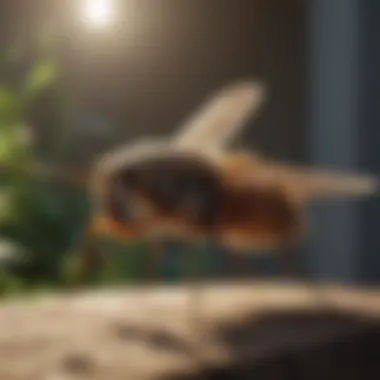
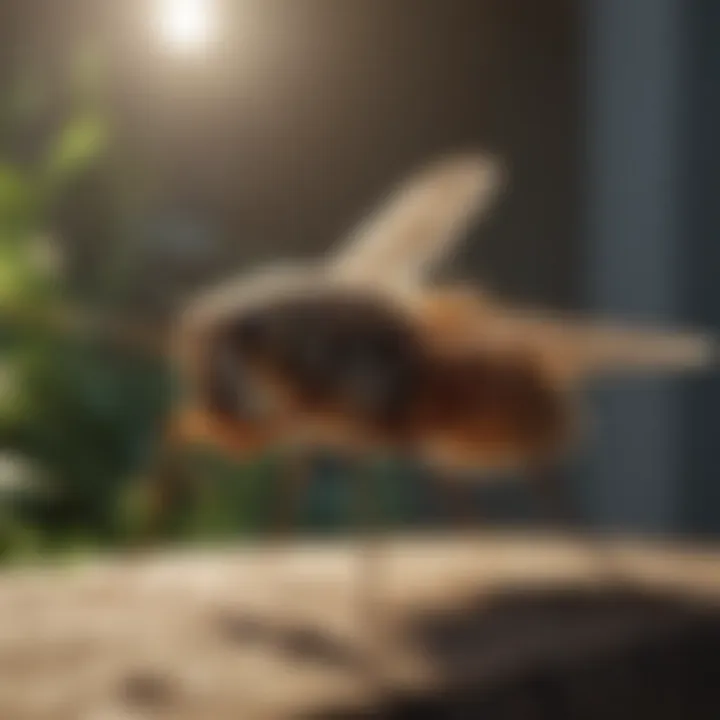
Light Spectrum and Efficacy
The spectrum of light emitted by the trap directly influences its ability to attract specific insects. Not all traps emit similar wavelengths of light, and some insects are more responsive to particular light colors.
- UV Light Attraction: Most insects are attracted to UV light. Traps that use UV bulbs tend to be more effective in capturing a range of species.
- Color Temperature: Different color temperatures, measured in Kelvin, can influence efficacy. A bluish light can attract more moths, while yellow lights tend to attract fewer beneficial insects.
For optimal results, it is vital to consider the specific pests you are targeting. Researching which light spectrum will work best for those insects significantly aids in making an informed trap selection.
Safety Features
Safety is a prime concern, especially in indoor environments. Fortunately, many modern traps incorporate safety features to minimize risks.
- Child and Pet Safety: Traps should be designed to prevent accidental contact. Many models now offer guards or housings that eliminate the risk of injury to curious toddlers or pets.
- Low Voltage Options: Electrocution traps may use low voltage, reducing the risk of serious harm in case of accidental contact. This can be a preferred option in homes with children and animals.
Understanding the safety mechanisms in each trap helps ensure that it meets the necessary safety standards without compromising efficiency.
Always prioritize safety by selecting traps specifically designed for indoor use. This ensures that while you aim for a pest-free environment, you also maintain household safety.
Evaluating these considerations about size, location, light spectrum, and safety features empowers homeowners to make informed decisions, leading to effectively optimized pest control solutions.
Installation and Setup
The installation and setup of indoor insect light traps are pivotal for their operational success. Proper placement and configuration enhance the device’s effectiveness in controlling pest populations. A well-installed trap not only improves catch rates but also minimizes the risk of overlooking critical pest hotspots within your environment.
Optimal Placement Strategies
When it comes to the optimal placement of indoor insect light traps, strategic positioning is essential. The objective is to position the traps where they can best attract pests. Here are some considerations:
- Height and Orientation: Install traps at a height that aligns with common flight patterns of insects. Many flying insects are drawn to light, so placing traps higher, around 6-8 feet from the ground, may yield better results.
- Proximity to Infestation Sources: Identify areas with high pest activity, such as kitchens, storage areas, or entry points. Placing traps near these locations increases the likelihood of trapping insects before they spread.
- Avoiding Interference: Keep traps away from direct sunlight and strong artificial light sources which can distract insects. Limits distractions to ensure that the traps remain the primary light source.
- Ventilation Considerations: Ensure that air circulation does not hinder trap performance. Poorly ventilated areas might inhibit the movement of pests towards the trap.
In summary, thoughtful placement can significantly enhance the trap’s efficiency in pest management.
Electrical Requirements and Setup
Setting up indoor insect light traps involves understanding their electrical requirements. This is crucial for both functionality and safety. Here are steps to ensure proper electrical setup:
- Power Source: Most traps operate on standard electrical outlets. Ensure that the location you select has easy access to power, ideally within a close range to avoid using extension cords.
- Electrical Safety: Use traps that are designed with safety features to prevent electrical accidents. Traps with grounded plugs and water-resistant designs are advisable for use in humid areas like kitchens.
- Wattage Requirement: Understand the wattage needs of your chosen trap. Usually, this information can be found in the user manual. Ensure that the circuit can support the wattage without risk of overload.
- Testing Functionality: After installation, test the light trap to ensure it is functioning correctly. Observe if the light is operational and check that traps or adhesives are correctly positioned to capture insects effectively.
Proper electrical setup enhances both safety and performance, resulting in an efficient pest control method that ensures a pest-free home.
By taking heed of these steps regarding installation and setup, householders can maximize the benefits of indoor insect light traps, making them an integral part of pest management strategies.
Maintenance of Indoor Insect Light Traps
The effectiveness and longevity of indoor insect light traps heavily depend on proper maintenance. An unmaintained trap may fail to perform optimally, resulting in increased pest prevalence and reduced cost-effectiveness. Regular upkeep not only sustains the efficiency of the traps but also ensures that they remain safe for household use. By adhering to maintenance protocols, homeowners can maximize the benefits of these pest control devices and minimize any potential issues.
Regular Cleaning Protocols
Cleaning is a vital aspect of maintaining indoor insect light traps. Dust, grime, and dead insects can accumulate over time, creating visuals that are not just unappealing but can also hinder the trap’s performance. To prevent this, a detailed cleaning schedule should be established. Here are some guidelines:
- Frequency: Clean the trap at least once a month. If the trap is in high-traffic areas or under heavy insect pressure, consider weekly cleaning.
- Cleaning Agents: Use a damp cloth to wipe external surfaces. Avoid harsh chemicals that might leave residue or harm the components.
- Inside the Trap: Follow manufacturer instructions to safely access and clean inside. Remove any trapped insects using a soft brush.
- Electrical Components: Always ensure the trap is unplugged before cleaning to prevent accidents.
- Reinstallation: Once cleaned, ensure all components are dry before reassembling the trap.
By implementing these regular cleaning protocols, you can enhance not only the aesthetics but also the functionality of your traps.
Lamp Replacement Schedule
The lamps in insect light traps are crucial for attracting pests, so having a replacement schedule is essential to maintain their efficiency. Over time, the intensity of UV light emitted by these lamps diminishes, leading to decreased performance. Here’s how to effectively manage lamp replacements:
- Replacement Timing: Most UV lamps should be replaced every 10 to 12 months, depending on usage. Check for manufacturer recommendations for specific products.
- Signs of Wear: If you notice a decrease in trap activity, it may be time to replace the lamp before reaching the suggested replacement period.
- Choosing Lamps: Always opt for high-quality replacement lamps that are compatible with your trap model. Brands like Bug Zapper and Dynatrap provide reliable options.
- Safe Disposal: Follow local regulations for disposing of used lamps, especially those containing hazardous materials.
Effective lamp management not only ensures continued efficacy but also promotes safety and environmental responsibility in pest control.
Key Takeaway: Regular maintenance, including cleaning and lamp replacement, is essential in keeping indoor insect light traps effective and safe in your home.
Effectiveness and Limitations
Understanding the effectiveness and limitations of indoor insect light traps is essential for making informed pest management decisions. While these traps offer a non-toxic approach to reduce insect populations, their performance can vary based on several factors. It's crucial to evaluate how effective these traps are in addressing specific pest issues, as well as to recognize the limitations that come with their use.
Target Insect Species
Different types of indoor insect light traps are designed to attract specific species of insects. For example, fruit flies, moths, and gnats are commonly targeted by these devices. The traps utilize ultraviolet light, which is known to attract these pests effectively. However, not all insect species respond to UV light in the same way.
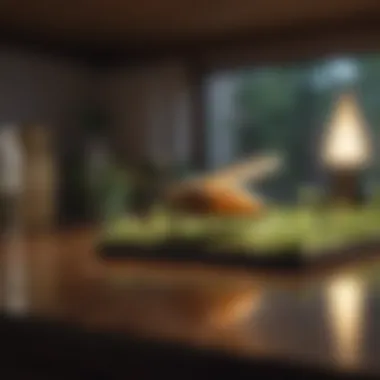
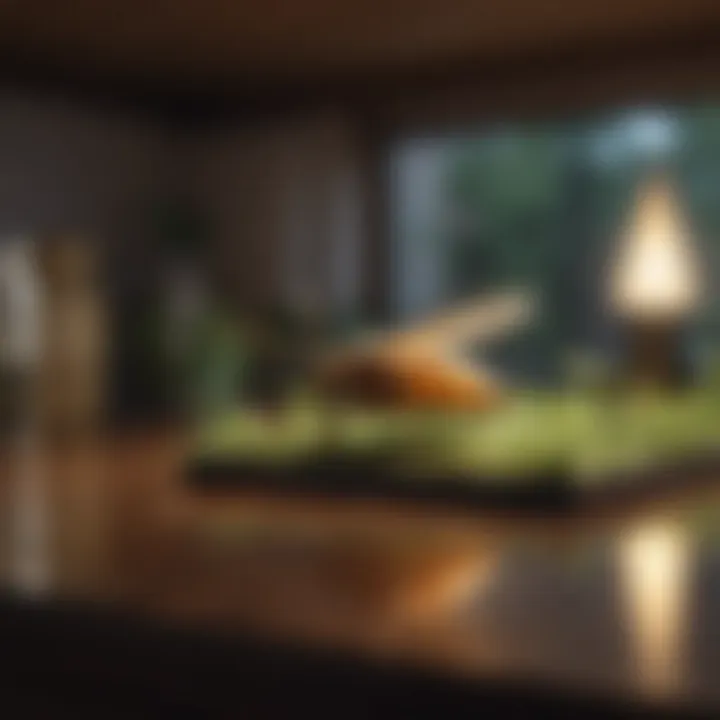
Certain species, such as cockroaches and ants, may not be as attracted to light, making these traps less suitable for controlling them. It is important to identify the primary pests present in your environment to choose the appropriate trap type.
Environmental Factors Influencing Efficacy
The effectiveness of indoor insect light traps can be significantly impacted by environmental factors. Here are some considerations:
- Room lighting: Operational indoor lighting can dilute the effectiveness of the UV light emitted by traps. Installing traps in darker areas can increase their efficiency.
- Humidity and Temperature: Certain pests are more active under specific environmental conditions. For instance, high humidity may enhance the attraction of certain flies, while other insects may thrive in drier spaces.
- Presence of competing light sources: If there are multiple light sources in a room, insects may be drawn to those instead of the trap. Avoid positioning traps near other bright lights or windows to maximize their effectiveness.
Common Misconceptions
Despite their benefits, misunderstandings about indoor insect light traps can lead to improper use. Some of these misconceptions include:
- Effectiveness against all insects: As noted, these traps are not universally effective against all types of indoor pests. Using them as the only control method for species not attracted to light may result in continued pest problems.
- Set it and forget it: A common belief is that once installed, traps will eliminate pests without further attention. Regular maintenance, including cleaning and lamp replacements, is essential for continued effectiveness.
- One trap fits all needs: Selecting a trap should be based on specific pest types and room conditions. There is no single solution that addresses every pest control need.
"Effective pest management requires understanding both the tools available and the specific challenges presented by different insect populations."
In summary, while indoor insect light traps offer a valuable pest control solution, their effectiveness can vary with the target insect species and environmental conditions. Being aware of the limitations and misconceptions surrounding these traps is crucial for homeowners seeking a pest-free environment.
Regulatory and Safety Considerations
Understanding regulatory and safety considerations is essential for the proper use of indoor insect light traps. These elements govern how these devices are designed, marketed, and utilized. Compliance not only ensures the effectiveness of the traps but also protects individuals and the surrounding environment. In this section, we will focus on two important aspects: compliance with local guidelines and health and safety implications.
Compliance with Local Guidelines
Local regulations regarding pest control devices might differ significantly. Compliance with these guidelines is crucial to avoid legal ramifications. Each jurisdiction may stipulate specific criteria for the materials used, the safety of the technology, and the efficacy standards that traps must meet.
House owners and housewives should check the regulations applicable in their area. Often, these guidelines are crafted to minimize risks related to chemical exposure and accidental electrocution. Manufacturers also have a responsibility to inform users about any necessary permits or registrations needed to deploy their products legally. Familiarity with these protocols ensures that users do not inadvertently violate laws while aiming for pest control.
Health and Safety Implications
Using indoor insect light traps with safety considerations in mind is vital. These devices can be effective, but if misused, they may pose health risks. Understanding these implications can help users maintain a safe living environment.
- Electrical Safety: Many light traps operate on electricity. Users should ensure they are using a certified product, and follow manufacturer guidelines to prevent electrical hazards. Regular checks of electrical connections can further mitigate risks.
- Potential Toxic Substances: Some traps may emit pheromones or other chemicals to attract insects. It is important to ensure that any substances released are non-toxic to humans and pets.
- Physical Safety: Especially in households with children or pets, placement of traps should be conducted with care. Proper positioning can prevent accidental injuries from the devices or their caught insects.
Ensuring compliance with safety standards and regulations is a key component of using indoor insect light traps effectively.
Comparative Analysis with Other Pest Control Methods
In modern pest management, understanding the diverse methods available is crucial for effective results. Indoor insect light traps offer a unique approach, but their integration with other pest control techniques can optimize outcomes. This section will explore the comparative advantages and drawbacks of indoor insect light traps against two primary pest control methods: chemical treatments and biological controls.
Chemical Treatments
Chemical treatments have long been a standard approach in pest control. These include widespread use of insecticides such as pyrethroids, neonicotinoids, and organophosphates. While they can be effective in drastically reducing pest populations, their use often presents several challenges:
- Toxicity: Many chemical pesticides can be harmful to humans and pets. Prolonged exposure raises health concerns, particularly in areas where children and animals are present.
- Resistance: Insects can develop resistance to chemical treatments, leading to declining effectiveness over time.
- Environmental Impact: Chemicals can leach into the environment, contaminating water supplies and affecting local flora and fauna.
In contrast, indoor insect light traps are typically non-toxic, offering a safer alternative. They can attract and kill pests without introducing harmful substances into the living environment. Therefore, light traps do not pose the same health risks as chemical treatments and can complement them by reducing reliance on chemicals. Moreover, combining both methods can yield a synergistic effect, where traps catch insects that have evaded chemical applications.
Biological Controls
Biological controls encompass a range of methods, including the use of natural predators, parasites, or pathogens to manage pest populations. Examples include introducing beneficial insects like ladybugs or employing fungi that specifically target pests. The advantages of biological control methods include:
- Eco-friendly: These methods align with sustainable practices, minimizing reliance on synthetic inputs.
- Lesser Resistance Development: Unlike chemicals, pests are less likely to develop resistance to natural enemies, maintaining the efficacy of control methods over time.
- Minimal Secondary Effects: Biological controls generally have less impact on non-target species, reducing the likelihood of unintended consequences in the ecosystem.
However, biological controls can be slower to take effect and may not always be effective in the immediate reduction of pest populations. This is where indoor insect light traps provide a complementary solution. Utilizing light traps alongside biological controls can quickly diminish pest numbers while the biological agents establish their presence, leading to long-term pest management without environmental harm.
"Integrating multiple pest control methods, including light traps, can enhance efficacy and sustainability in managing indoor pests."
In summary, a comparative analysis of indoor insect light traps with chemical treatments and biological controls illustrates the significance of adopting a multi-faceted approach in pest management. Each method has its benefits and limitations, and combining them strategically can lead to a more effective and safer pest control strategy in households.
End and Future Directions
The concept of indoor insect light traps has gained significant traction in recent years, highlighting the importance of integrating pest management solutions into everyday life. This section serves to wrap up the vital insights explored throughout the article while also shedding light on forward-looking developments in trap technology. An effective understanding of these elements aids housewives and homeowners in making informed decisions about pest control methods.
Summary of Key Insights
Indoor insect light traps are not just passive devices; they play an active role in maintaining a pest-free environment. They utilize ultraviolet light to attract insects, which are then eliminated through electrocution or adhesive mechanisms. A mix of advantages including non-toxic pest control, ease of use, and low maintenance needs make them appealing choices for modern households. Notably, these traps are friendly to the environment, posing minimal risks to pets and humans compared to conventional chemical treatments.
In summary, the key points derived from our discussions include:
- Effective attraction and capture methods that work for various insect species.
- A range of trap types suited for different settings and preferences.
- The importance of adhering to safety regulations and guidelines.
- Future advancements in technology that promise enhanced efficacy and user convenience.
Advancements in Trap Technology
As technology continues to evolve, so too do indoor insect light traps. Innovations in design and functionality have led to significant improvements in how these devices operate. Newer models are being equipped with smart features such as connectivity with mobile apps for monitoring and management. This connectivity allows users to receive alerts when traps are filled or lamps need changing.
Moreover, advancements in UV light technology aim to increase the efficacy of attracting a wider range of insect species. Improved energy efficiency and sustainability aspects are also becoming focal points in the development of newer models. Manufacturers are exploring eco-friendly materials and energy-saving LED bulbs that not only reduce usage costs but also minimize ecological footprints.
"The future of indoor insect light traps lies in smart technology and sustainable solutions, shaping a more efficient approach to pest management."



